Petunia plants are costly to buy and easily grown from seed, so grow them at home. Here’s how to start your own petunias from seed!
More seed starting resources:
Click here for more tips about how to start seeds on a budget.
Petunia plants are costly to buy and easily grown from seed, so grow them at home. Here’s how to start your own petunias from seed!
Click here for more tips about how to start seeds on a budget.
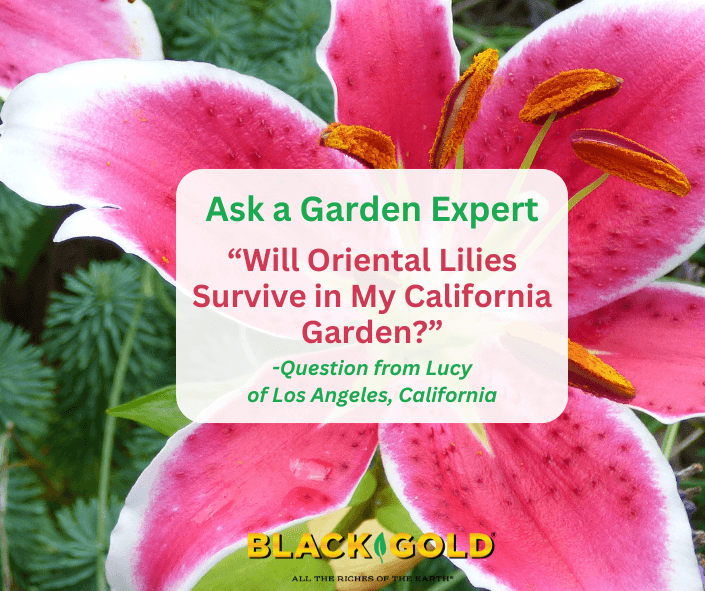 “I want to grow oriental lilies in my garden, but I am told they may not survive where I live in Los Angeles. Can I grow them?” Question from Lucy of Los Angeles, California.
“I want to grow oriental lilies in my garden, but I am told they may not survive where I live in Los Angeles. Can I grow them?” Question from Lucy of Los Angeles, California.Answer: It depends on where you live in the Los Angeles, California area. Oriental lilies (Lilium orientale) need six weeks of winter cold to survive and bloom each year. They are hardy to USDA Hardiness Zones 4-9 or Sunset Climate Zones 1-9, 14-23. Los Angeles is listed as having Zone 9 or 10 areas, depending on local topography and proximity to the ocean, as well as varying Sunset Climate Zones (Click here to see the Sunset Climate Zones for LA). If you live in an area listed as USDA Hardiness Zone 9 or the appropriate Climate Zones, give them a try. Otherwise, they will survive for only a few years before declining.
Some plants, like oriental lilies, need winter cold to complete their life cycle and flower each year. The process is called vernalization (Derived from the Latin word “vernus”, which translates to “of spring”). Generally, certain plants need a specific amount of cold exposure for the induction of flower buds for the coming year. No cold means no flowers, and plants will eventually die due to lack of cold.
If you are determined to grow oriential lilies, you can also try growing them in pots and chilling them each year. Chill them in temperatures below 40° F. After chilling, they take around three and a half months before blooming.
If you try planting them, you will also need to water your lilies more frequently, and amend the ground soil where they are planted with lots of organic matter because L.A. is dry and soil quality varies.
 Overall, oriental lilies grow best in soils that are well-drained and rich in organic matter. The ideal pH should be slightly acidic (5.5 to 6.5), but neutral soils are also tolerated. Lily bulbs planted in the ground will thrive if the soil is amended with Black Gold Natural & Organic Garden Compost Blend. If you plan to pot your lily specimens, I recommend potting them in Black Gold® All Purpose Potting Mix or Black Gold Natural & Organic Ultra Coir, which is rich in organics but drains well. Choose a fertilizer specially formulated for summer bulbs. They are balanced fertilizers with added bonemeal, and there are many fine choices available at garden centers.
Overall, oriental lilies grow best in soils that are well-drained and rich in organic matter. The ideal pH should be slightly acidic (5.5 to 6.5), but neutral soils are also tolerated. Lily bulbs planted in the ground will thrive if the soil is amended with Black Gold Natural & Organic Garden Compost Blend. If you plan to pot your lily specimens, I recommend potting them in Black Gold® All Purpose Potting Mix or Black Gold Natural & Organic Ultra Coir, which is rich in organics but drains well. Choose a fertilizer specially formulated for summer bulbs. They are balanced fertilizers with added bonemeal, and there are many fine choices available at garden centers.
Happy gardening!
Jessie Keith
Black Gold Horticulturist

Sweet spring beets, carrots, scallions, radishes, and turnips! Few vegetables are as awaited in my home garden. Though root vegetables can continue to be grown throughout the season, they are the sweetest and arguably easiest to grow in the spring. The best time to start them is usually a couple of weeks before the last frost date. Even better, they are fast to produce and easy to grow.
Once I find a really good vegetable variety, I continue to grow it. Here are a few raised in my garden regularly.
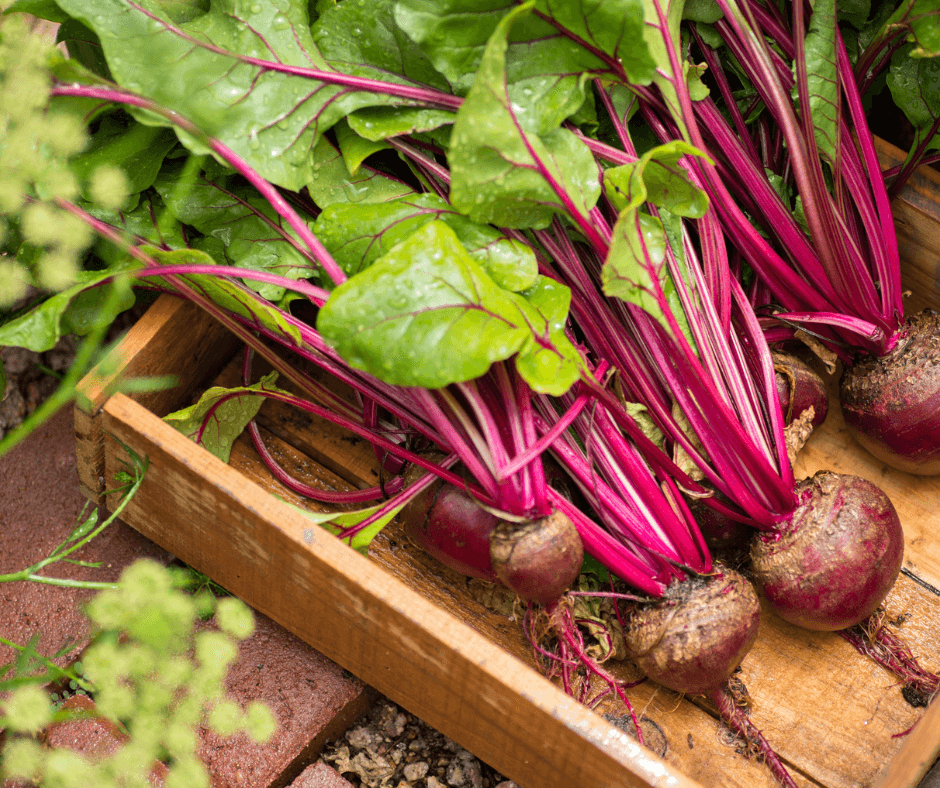
The uniform, red ‘Boro’ beets are known for having superb sweet flavor and can be harvested as baby beets or a bit larger. They are very fast growing–ripening in about 50 days from seed. Another good red is the classic beet, ‘Detroit Dark Red’ (55 days). The popular variety is easy to find and has sweet, uniformly round roots. (Click here to watch a video with more details about growing beets.) For those seeking a more unusual beet, try the tasty white, ‘Avalanche‘ beet. It is another easy one sure to provide good results in the garden. All young tender beet greens may also be selectively harvested and eaten in salads or sauteed as a vegetable.

A good friend shared some of her freshly plucked ‘Adelaide’ Baby Carrots (32-50 days) with me a few springs ago and I was hooked. They are the most crisp, sugary carrots ever! Expect them to take 50 days to fully mature from seed. Another winner is the purple-red, The National Garden Bureau’s AAS-winning carrot ‘Purple Haze’ (73 days). The carrots take longer to mature but are worth the wait. Start them in March for May harvest. Those seeking a faster, reliable, classic orange carrot should try ‘Caravel‘ (58 days). It is an early-to-produce variety with good sweetness and production.
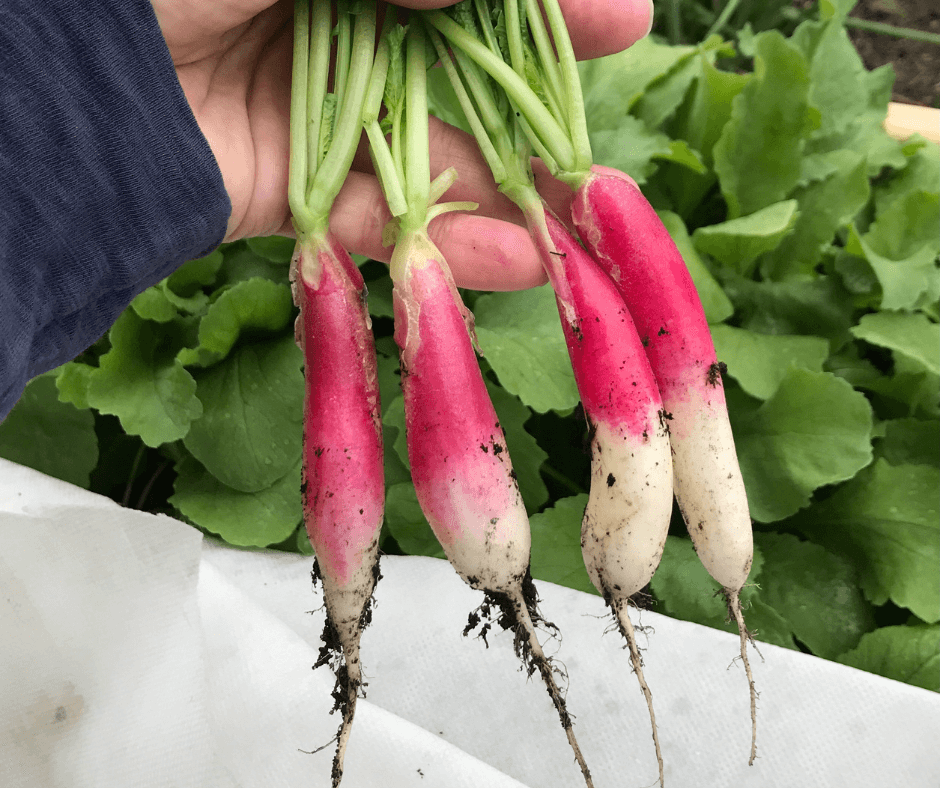
The sweet and crisp ‘D’Avignon’ French Breakfast Radish is a traditional elongated French breakfast radish. In my garden, it tends to be sweet rather than hot. Give the roots just 21 to 30 days for full development. Watermelon radishes are both beautiful and tasty. The ‘Chinese Starburst‘ hybrid (60 days) is a good variety to choose for bright pink color and sweet and spicy flavor.
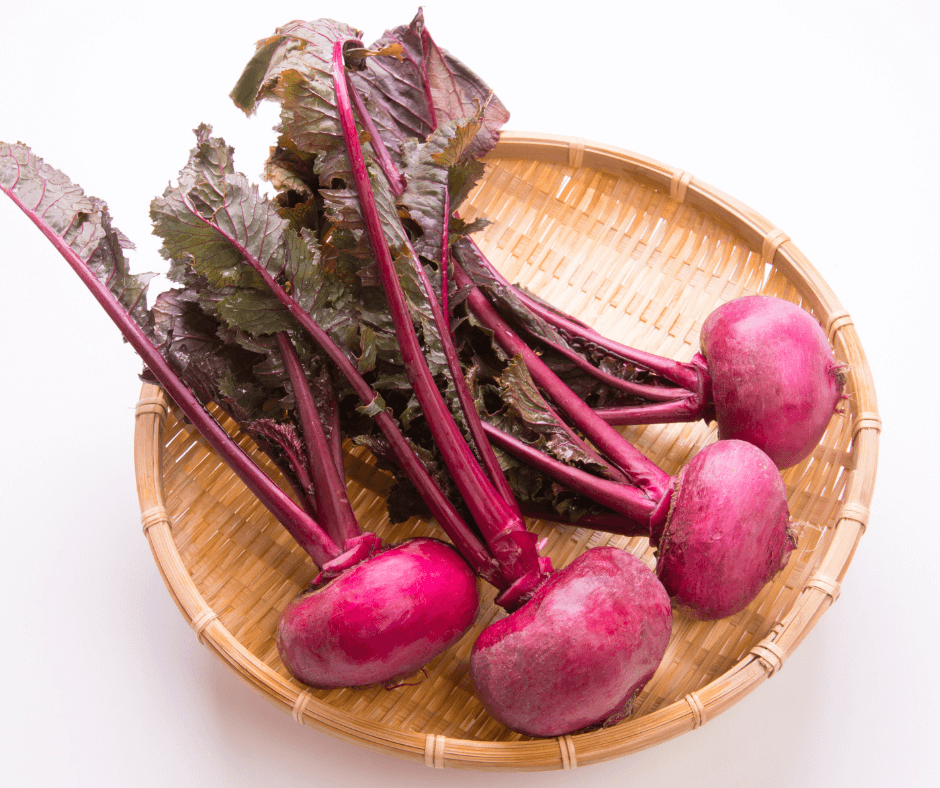
Classic purple-topped turnips are available through almost every seed vendor, but there are a few more unusual varieties worth considering. The red-skinned ‘Scarlet Ohno‘ turnip is crunchy, sweet, and pink on the inside. Expect them to take about 50 days before they are ready to harvest. Another Asian variety is the Japanese ‘Tokyo Market’ (35 days), which is white, fruity, and crisp. It is recommended for fresh eating in salads.
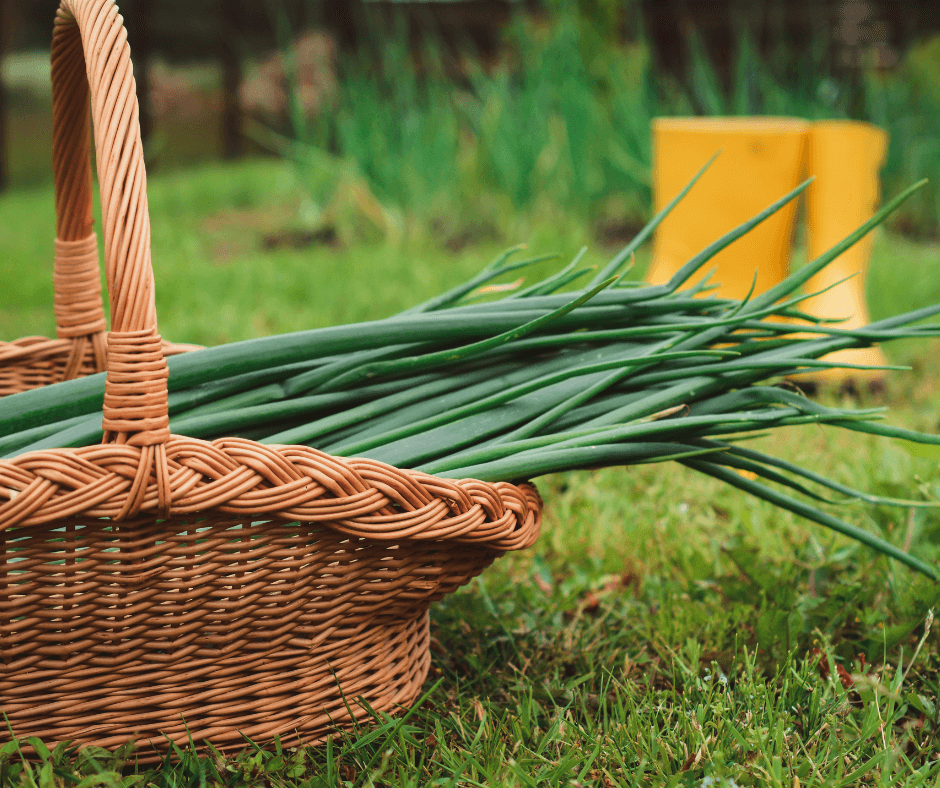
In general, scallions grow quickly and taste the mildest when grown in mild, cool weather. The fine, tender scallions of ‘Kyoto Kujo Negi‘ are tasty and fast. In just 40-50 days you can grow your own tender scallions from seed.
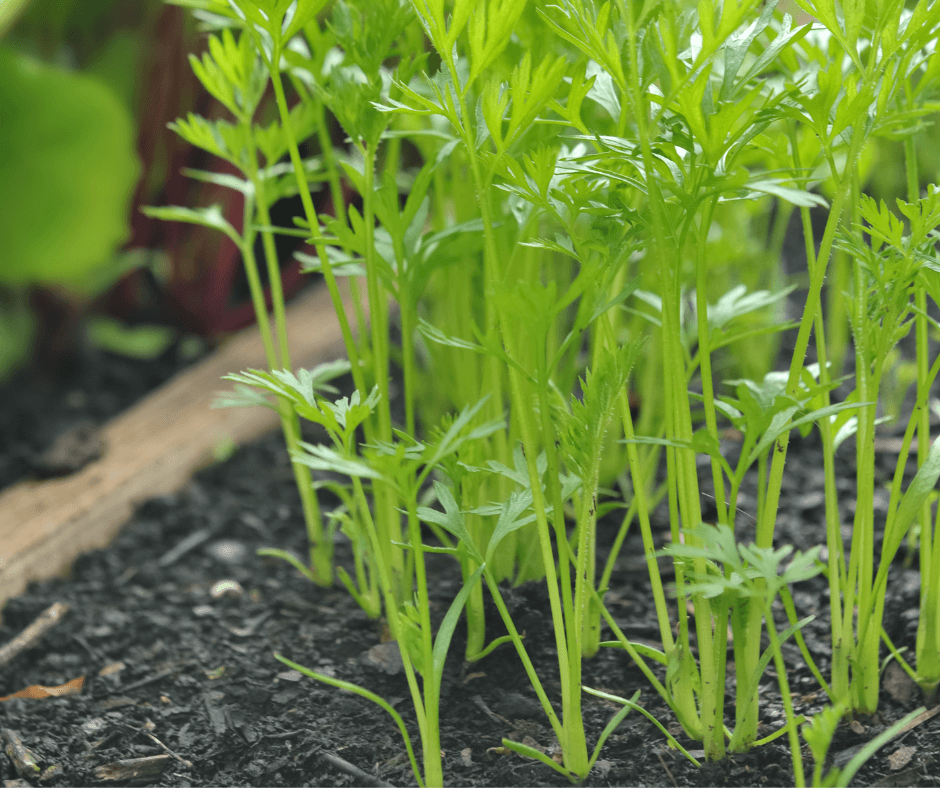
Root vegetables require a sunny garden space and friable loam high in organic matter and with a pH of 6.0 to 6.8. Those with tap roots, like carrots, parsnips, and Asian radishes, are most in need of rich loam.
If your soil is high in clay, I recommend double digging your growing area. Double digging loosens the soil and involves amendment with compost (Black Gold Garden Compost Blend), peat moss, and slow-release vegetable fertilizer to encourage superior rooting. [Click here to read an article about double digging.]
 Direct sow your root vegetables. Start by labeling your rows. To seed your crops, create shallow rows with a stick and sprinkle them with added peat or compost to gently cover the seeds and help germination. Finally, lightly water the rows. Keep the seeds lightly moist until the seeds start to sprout. Once they sprout and begin to grow, you can water more vigorously.
Direct sow your root vegetables. Start by labeling your rows. To seed your crops, create shallow rows with a stick and sprinkle them with added peat or compost to gently cover the seeds and help germination. Finally, lightly water the rows. Keep the seeds lightly moist until the seeds start to sprout. Once they sprout and begin to grow, you can water more vigorously.
Thin seedlings when they reach 2-3 inches in height. I generally allow 4-5 inches spaces between plants, depending on the variety. Keep the most vigorous seedlings, if possible, and remove the thinnest.
Root vegetables require regular watering and weeding. Follow these steps and they should grow beautifully!
Smaller root vegetables can also be grown in containers, but I choose smaller varieties for greater yields–petite French Breakfast radishes.
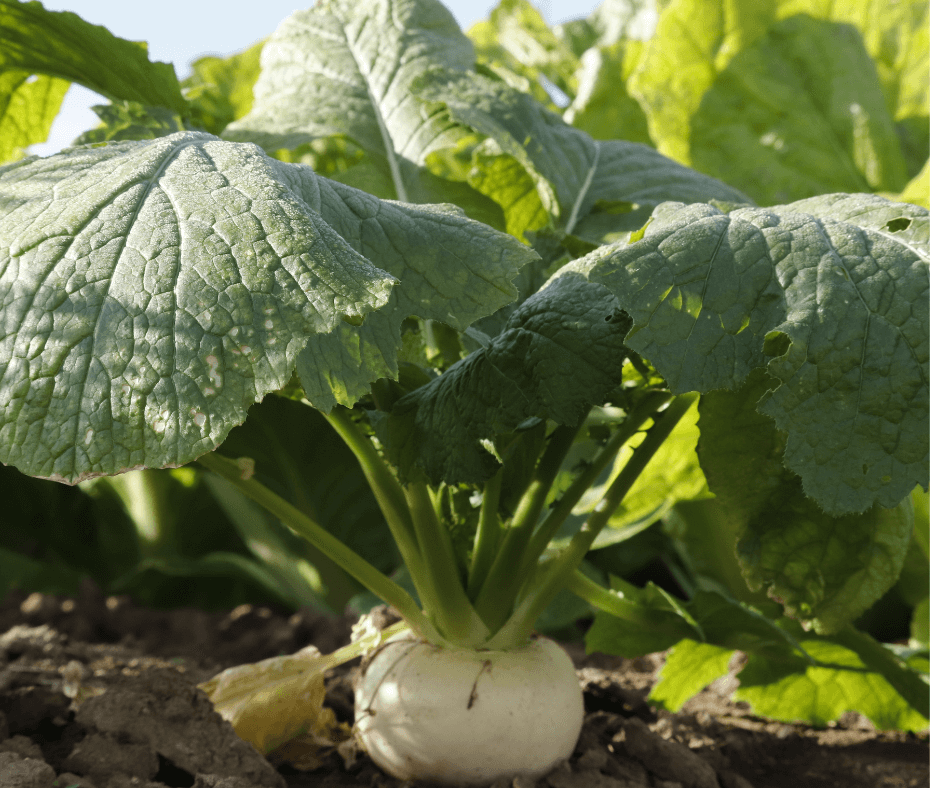
Most root crops bulb up at the top when they are ready. The round, protuberant tops appear on all of the root vegetables mentioned in the article. Once their tops become substantially round and bulb up at the top, try pulling one to sample. If the vegetable appears as described in the seed catalog, your vegetable is ready. Use the sample as a guide to harvest the rest of your crops.
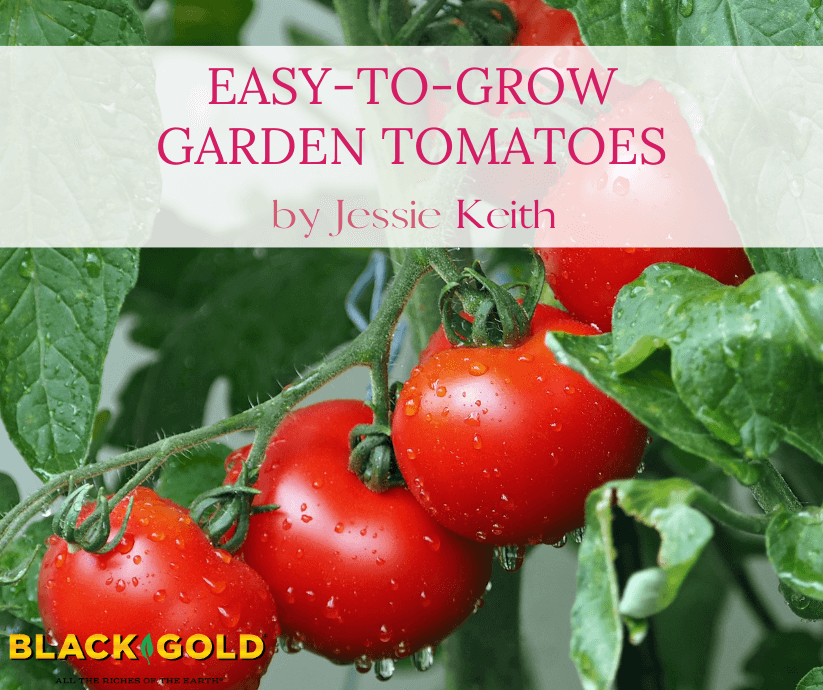
Fresh-from-the-garden tomatoes (Lycopersicon esculentum) are a seasonal delicacy every gardener should try to grow at home. Thirty-five years of tomato growing have taught me the effortless tomato varieties versus the more finicky, less productive types. Newer gardeners seeking to grow bountiful harvests of tomatoes should start with the standbys for ease of growth, flavor, and productivity. Of the nearly 60 tomato varieties I have grown, here are some of the most gratifying, flavorful, and easy. Some are modern cultivated varieties, and others are heirlooms.
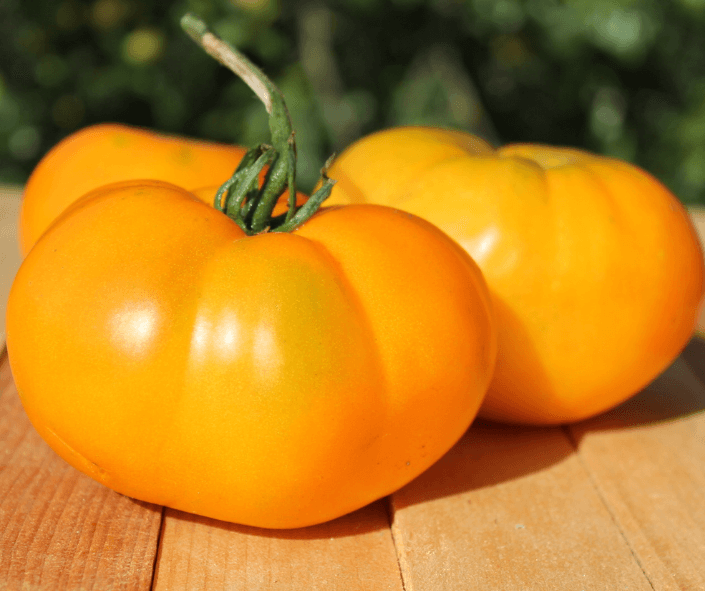
Those who like traditional red tomatoes the best need to grow ‘Celebrity Plus’ (70-78 days) an updated version of the classic 1984 AAS Winner, ‘Celebrity’ (both are good but plus is more vigorous and disease resistant). The 8-oz fruits are produced on productive determinant (bushy) vines.
‘Kellogg’s Breakfast’ (85 days) is a golden-orange heirloom tomato with dense, meaty flesh and a distinctive tangy sweet taste. The large tomatoes can reach up to a pound each. Give the indeterminate (vining) plants good support. A strong cage is recommended.
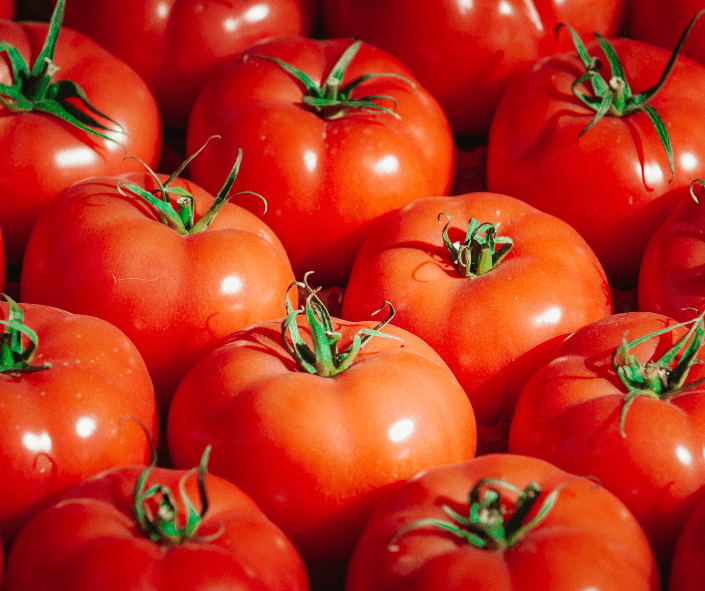
‘Mortgage Lifter’ (85 days) never disappoints. The long vines produce huge, red beefsteak tomatoes nonstop during the warm days of summer. Fruits commonly reach over 1 lb. each and regularly win taste tests.
Those seeking an exciting yellow and red bicolor with super sweet flavor need to try the effortless, ‘Virginia Sweets.’ The vining plants produce large slicing tomatoes with the best possible tangy-sweet flavor. The tomatoes are yellow with distinctive red streaks. Each tomato can weigh as much as 1 lb. each!
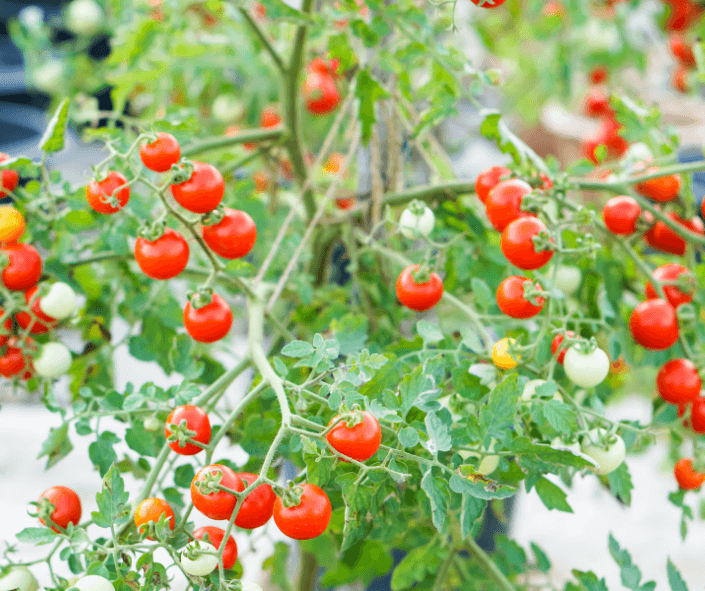
The tiny currant tomato, ‘Matt’s Wild Cherry’ (60 days), has bright red, sweet, flavorful fruit and produces nonstop with limited care once the vine gets going. The indeterminate (vining) tomato requires a sturdy cage and will branch vigorously, so pruning is sometimes required. (Click here to watch a video about how to prune tomatoes.)
My favorite cherry tomato of all time continues to be ‘Sungold’ (65 days) without fail. The cheerful orange fruits are super sweet and fruity and produced on vines that don’t stop until the first frost of fall. The weighty, long vines are vigorous and will continue to produce into fall. Provide a super strong cage and midseason pruning. After a long rain, ripe fruits may crack on the vine, but otherwise ‘Sungold’ is quite disease-resistant and trouble-free.

A tried-and-true classic cherry tomato variety is ‘Super Sweet 100’ (70 days). The award-winning variety produces long trusses laden with bright red, sweet, slightly tart cherry tomatoes with minimal effort. Stake or cage vines.
(Click here to watch a video highlighting my 10 favorite cherry tomatoes for flavor.)
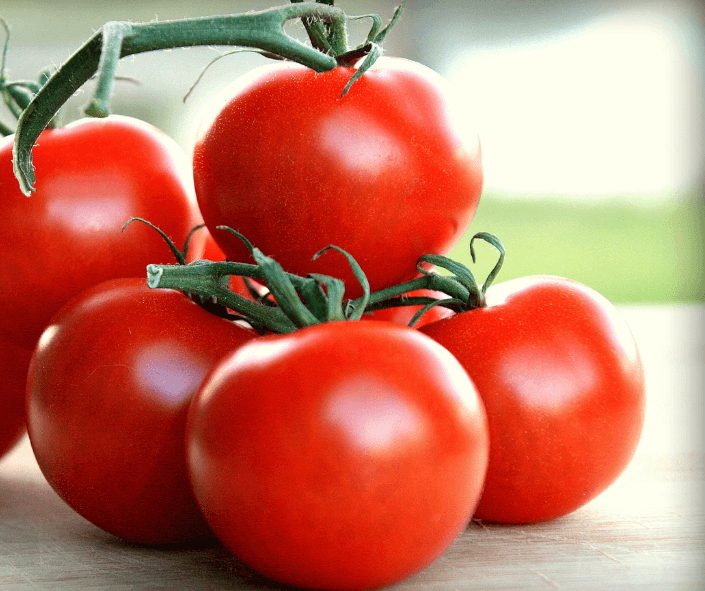
The crack-free, bright red, salad tomato ‘Mountain Magic’ (66 days) rivals popular Campari tomatoes and is wonderfully easy to grow. The large vine needs a strong cage and will continue to stay productive until frost.
Italian ‘Principe Borghese’ is a classic red salad or sun-drying tomato from Italy. The plants produce long trusses (7-10 per truss) of small, deep red fruits with a balanced tomato flavor. Like most tomatoes on the list, it is a vining type that needs strong support.
The following video provides simple steps to growing champion tomatoes.

Answer: Fungus gnats and their larvae live in and are attracted to all soils that are high in organic matter and moist. So, the soil and plant need to be maintained in a way that eliminates fungus gnats. I encourage you to watch the following video about how to remove fungus gnats if you have them.
Whenever I buy a new plant or purchase a new bag of potting mix, I make sure the bag has no holes and the soil has no gnats. If any bag of soil you buy seems to have gnats, remove the bag from your home and return it immediately.
Happy Gardening!
Jessie Keith
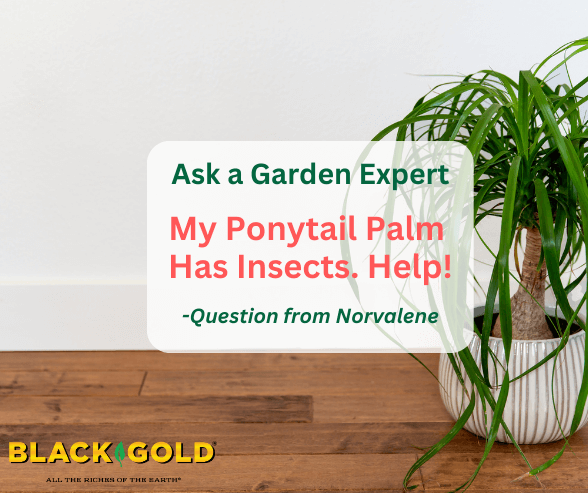
Dear Norvalene,
Ponytail palms (Beaucarnea recurvata) like dry conditions, so do not sit yours in water. They are typically easy to grow, but on occasion, they get tiny mites on the foliage or other insects, such as mealy bugs, scale, or earwigs, down in the cracks between the leaves. I have a couple of recommendations for ways to remove any unwanted insect pests. Mealybugs are the most common problem. Please read the following to learn how to manage them. You can use the same techniques to manage scale and mites. The excerpt is followed by instructions for replanting and caring for ponytail palms.
Here is an excerpt from my blog, Managing the Worst House Plant Pests:
Mealybugs are soft, white, and feed on the juices of plant leaves and stems, particularly in the crevices between leaves and stems. Mealybug infestations are hard to manage because these pests travel and spread as crawlers. Crawlers are the nearly invisible nymphs that hatch from the pest’s white, cottony egg masses and “crawl” several feet to quickly infest other plants. You can’t always see these crawlers, so to manage them, you have to clean plants, containers, and surrounding surfaces when you see an infestation. They produce copious crawlers, so the sooner you notice mealybugs, the better.
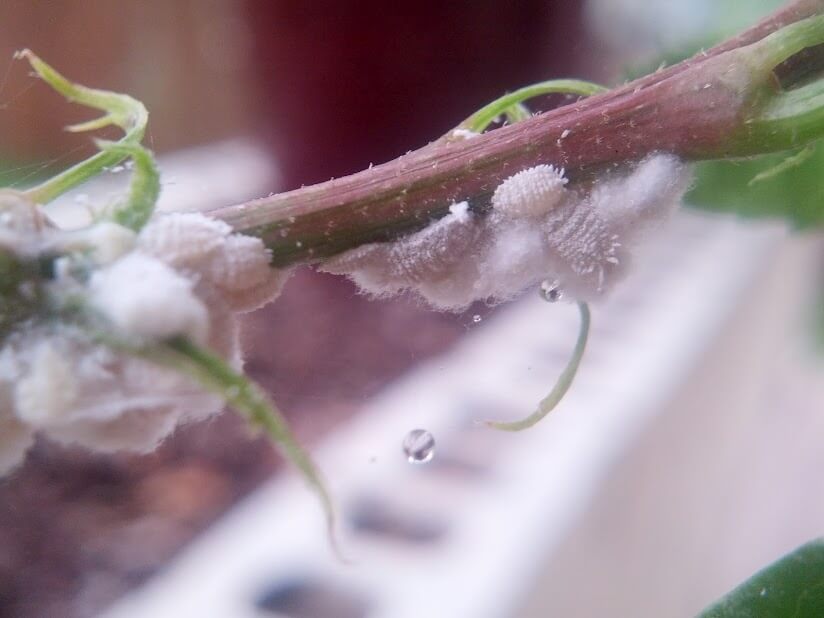
To remove mealybugs, start by cleaning your plant, its pot, and all surfaces surrounding the plant. Remove the top two inches of potting soil and replace it with fresh. Finally, spray the plants. One of the best mealybug sprays is a 10-25% solution of isopropyl alcohol. Fill a spray bottle with 1/4 cup of isopropyl alcohol and 2/4 cup water and shake to combine. When treating plants with this solution, keep them out of direct sunlight because it can cause leaf burn in the bright sun. You can also treat plants with insecticidal soap or Neem oil. Repeat spray treatments until plants are mealybug-free.
Another method to stop crawlers is to surround infected areas with double-sided tape traps. As the crawlers hatch and begin crawling, they will get stuck on the tape and die. You can also surround plant bases and pot edges with double-sided tape to keep crawlers from moving beyond an infected plant.
Ponytail palms are technically succulents. The bulbous base of the plant holds water like a succulent, and they like drier soil, so provide a fast-draining potting mix, such as Black Gold® Natural & Organic Succulent & Cactus Potting Mix. To replant yours, plant it in a pot slightly larger than the one it’s currently in, and make sure the container has large drainage holes to further encourage drainage.
When replanting, I generally place a layer of fresh soil in the bottom of the pot. Your goal should be to have at least 1 inch of space at the top of the pot for watering after replanting. Remove the plant from the old pot and make sure its roots are not densely intertwined or pot-bound. If they are, gently tease them apart along the edges before planting. Next, center the plant in the new pot, and then work soil around the edges, packing it down gently with your fingers until the root ball is covered. (Please click here to watch the following video to learn more about transplanting.)
Be sure not to overwater the plant. I typically water mine once weekly during the winter months and twice weekly in summer when I take my plant outside.
Happy gardening!
Jessie Keith

Red or pink roses offer a beautiful but temporary anniversary, Valentine’s, or birthday sentiment. If your sweetheart enjoys plants, why not choose a botanical gift with more lasting enjoyment? Houseplants with heart-shaped leaves and brilliant pink and red foliage and/or flowers are offered by florists and will look lovely in a pretty pot throughout the year. (Look for online florist’s links at the end of each plant description.)
In keeping with holidays for your loved one, pink and red plants are best. Those with heart-shaped leaves are a bonus. Here are some of the prettiest and easiest to grow.

Heart-shaped flowers in Valentine’s colors make the South and Central American flamingo flower (Anthurium hybrids) a good houseplant for the season. Sizes vary based on the variety. ‘Queen of Hearts’ is a pretty one reaching up to 2-feet. The candy-striped ‘Livium‘ is shorter, reaching just 18″, and Anthurium ‘Million Flowers Red’ is a shorter red-flowered variety with many extra-small flowers of glossy red. The easy-to-grow houseplants grow beautifully on window-side tabletops with moderate sunlight. (Click here for a good potted florist’s option.)

The leaves are the star of the show with the truly pink-leaved rosy calathea (Calathea roseopicta ‘Rosy’). Each large, glossy leaf is truly rosy pink and haloed in dark green. The tropical plant reaches 2 feet and grows beautifully in bright indirect light. You know it’s got to be good because the Royal Horticultural Society gave the plant an Award of Garden Merit in 2020. (Click here for a good florist’s option.)
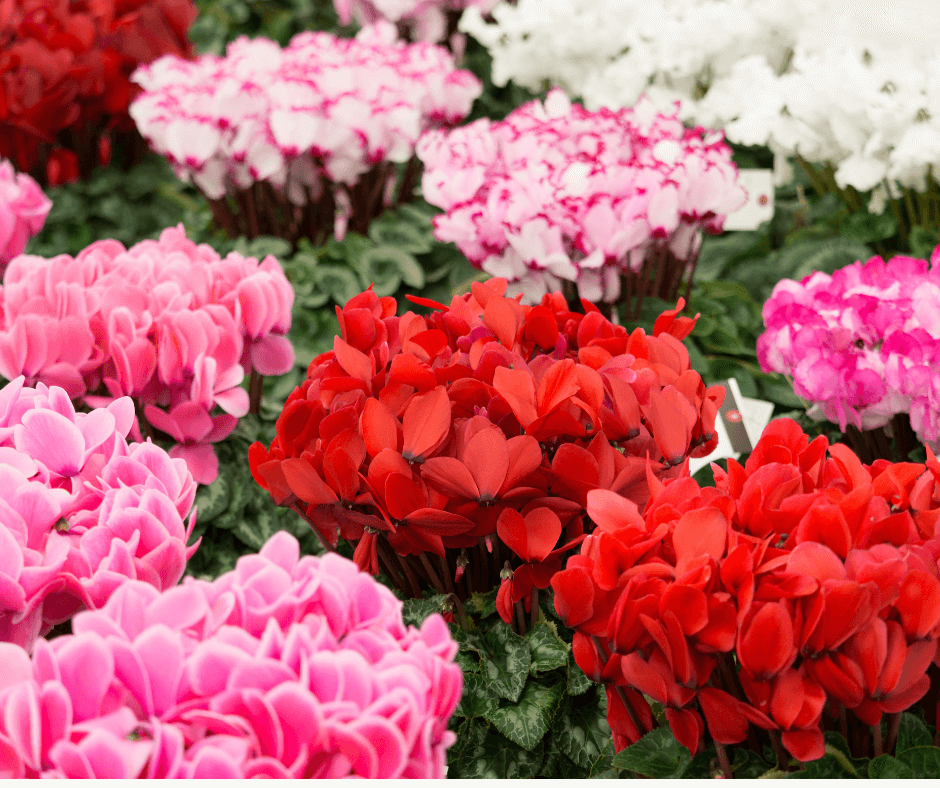
The nodding, shooting star flowers of the florist’s cyclamen (Cyclamen persicum hybrids) rise from mounds of heart-shaped leaves with intricate silver markings. Flower colors are mostly in shades of red, white, and pink, but there are also some purplish variants. When in bloom, the plants reach 6-12″, depending on the variety. The foliage looks attractive alone when plants are not in bloom. Provide your cyclamen with indirect sunlight. (Click here for a good florist’s option.)
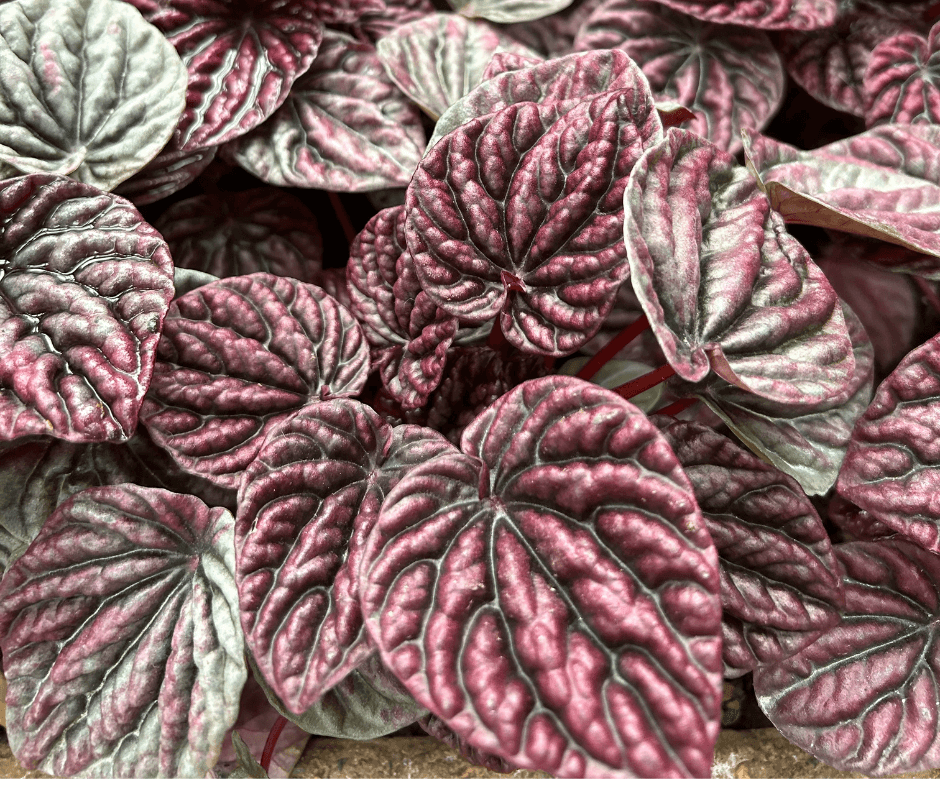
Peperomia lack showy flowers, but they make up for the lack with attractive, rippled, heart-shaped leaves with red overtones. The compact variety ‘Luna Red’ reaches 6-8 inches and has pewter and red foliage with a deeply corrugated texture. The brighter red ‘Schumi Red‘ is another option. The houseplant is also easy to grow and thrives in medium sunlight. (Click here for a good florist’s option.)
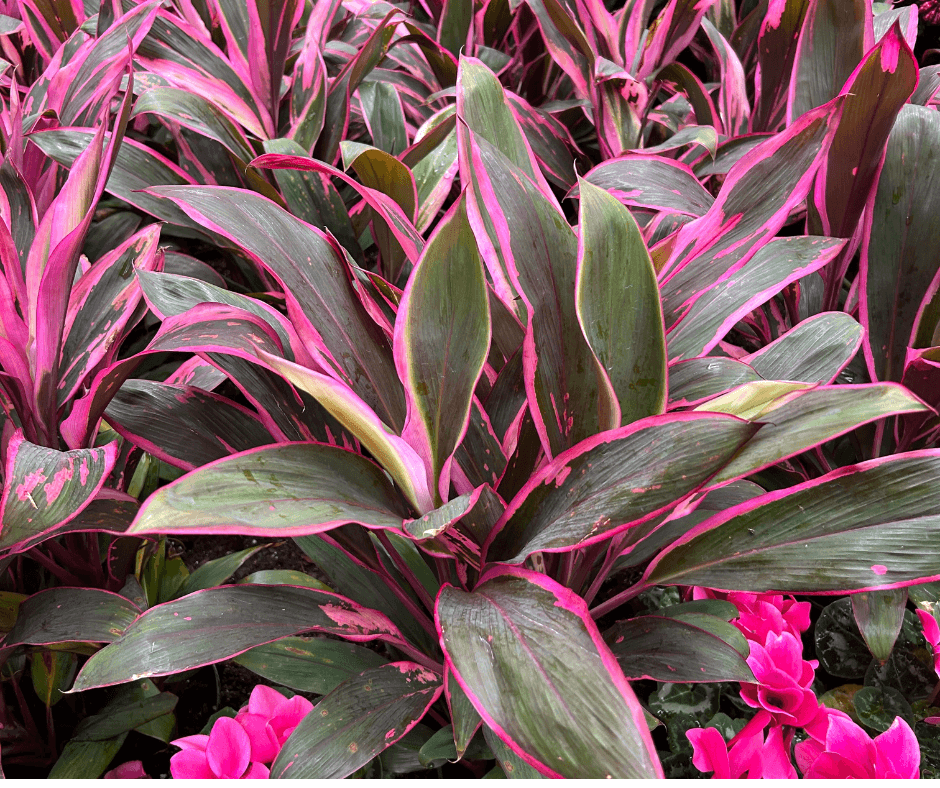
Most varieties of good luck plant have streaks of brilliant pink or red. Two of the prettiest are ‘Maria‘, with lance-shaped green leaves edged in magenta, and ‘Harlequin‘, with leaves green leaves striped with paler green and pink. The plants look outstanding all year long. Be sure to provide bright indirect light and remove any leaves with browning edges. Provide ample humidity to keep the foliage healthy.
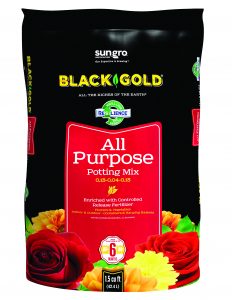 Most of the plants mentioned here are tropical, aside from the Mediterranian cyclamen, so their cultural needs are similar. Place them where they can get bright indirect light on all sides. If you can only provide good light on one side, turn the plant intermittently to ensure uniform growth. Warmth (60-75 degrees F), average to moderate humidity, and regular water will keep them looking good. Let the pots become mostly dry between watering.
Most of the plants mentioned here are tropical, aside from the Mediterranian cyclamen, so their cultural needs are similar. Place them where they can get bright indirect light on all sides. If you can only provide good light on one side, turn the plant intermittently to ensure uniform growth. Warmth (60-75 degrees F), average to moderate humidity, and regular water will keep them looking good. Let the pots become mostly dry between watering.
If you find one of these plants at a local nursery, buy a beautiful pot to place it in and add rich, all-purpose potting soil, such as Black Gold All Purpose Potting Mix, to fill in any gaps around the edges after planting. Be sure to leave at least an inch or two at the top for watering. An application of all-purpose slow-release fertilizer after planting will ensure they will stay fed and happy for up to six months.

Many fine, new, sun-loving annuals will be available at garden centers or seed catalogs in 2024 (Article: Growing Homegrown Plants from Seed). My top picks have been selected for their bold color, good looks, and easy care. All are sure to bring bright season-long color to your summer garden.

Agastaches are some of the best flowers for the sun because they bloom nonstop and tolerate heat and moderate drought. The guava-pink spikes of Agastache Guava Lava, newly introduced by Darwin Perennials and Walters Gardens, Inc., will provide continuous color to sunny summer gardens. In some areas of the country, the plant may survive as a short-lived perennial, but in cooler areas, the high-performer will bloom for only one season.

Proven Winners is offering some outstanding new petunias and calibrachoas sure to provide a cascade of summer color to containers and border edges. The intense yellow flowers of Supertunia® Saffron Finch™ bloom nonstop on compact, rounded plants and will fit almost anywhere in the garden. The petunia is a charming companion to the equally warm-colored Superbells® Double Redstone™ with its dark orange-red blooms edged in gold. The mounding calibrachoa appreciates slightly moist soil, while the petunia demands more water, so plant them in complementary side-by-side containers if you choose to pair them in pots.
For electric garden color, try the impressive Crazytunia Mayan Sunset. The hot pink and golden orange flowers are prolific and will sizzle in the summer garden. For a big burst of color, plant them along the edge of a large container on your porch or patio. (Article: Keep Petunias and Calibrachoa Shining All Season)
All of the above petunias are offered as plants. For those interested in growing gorgeous petunias from seed, try the frilly Superbissima Wine Red, offered by Park Seed at the cost of $5.95 for 10 seeds. The wine-red flowers have centers veined with dark purple, and the plants are praised as being robust and ever-blooming. To make planting easier, Park’s has pelleted the small seeds! (Article: Seed Starting on a Budget).
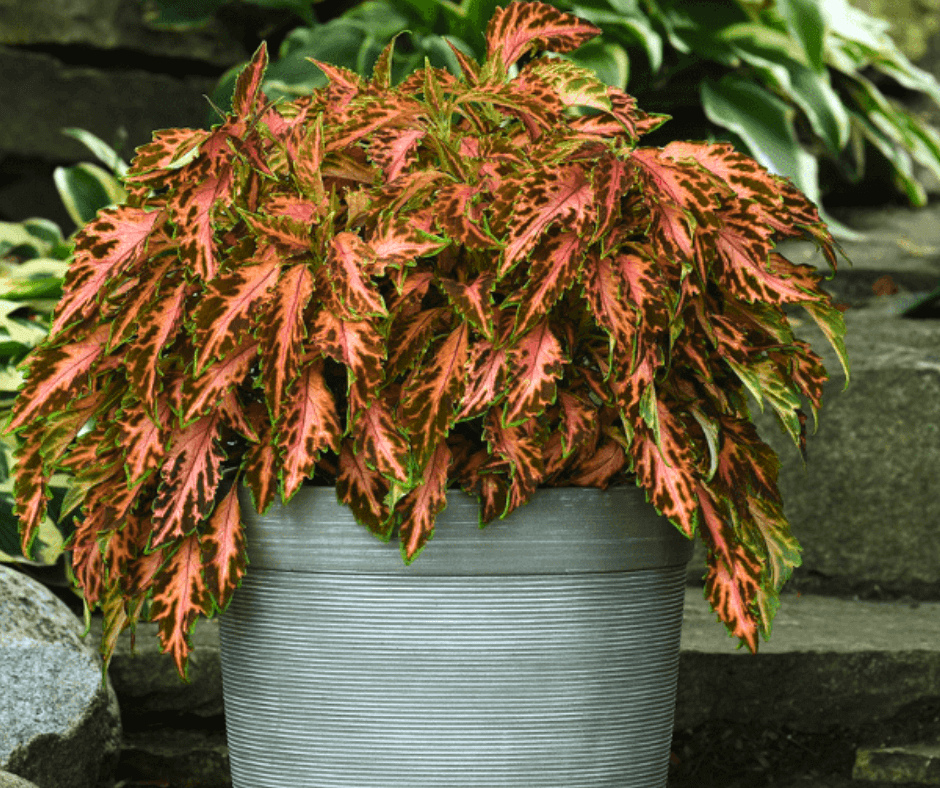
Most coleus are shade annuals, but more and more varieties, such as ‘Coral Candy’ premium Sun Coleus, have been bred to grow beautifully in the full sun. The 2023 All-America Selections winner has mottled coral-orange leaves with hints of purple and green edges–beautiful! And, because the variety is seed-grown you get more for your money. Fifteen seeds cost $7.95.
The pure yellow blooms of Gaillardia ‘Golden Beauty’ are fully round and produced profusely on long, airy stems ideal for cutting. Pollinators cannot get enough of the long-blooming, drought-tolerant annuals. Burpee Seeds offers these drought-tolerant beauties for just $5.95 for 50 seeds! Plant them in a cutting, pollinator, or showy flower garden.
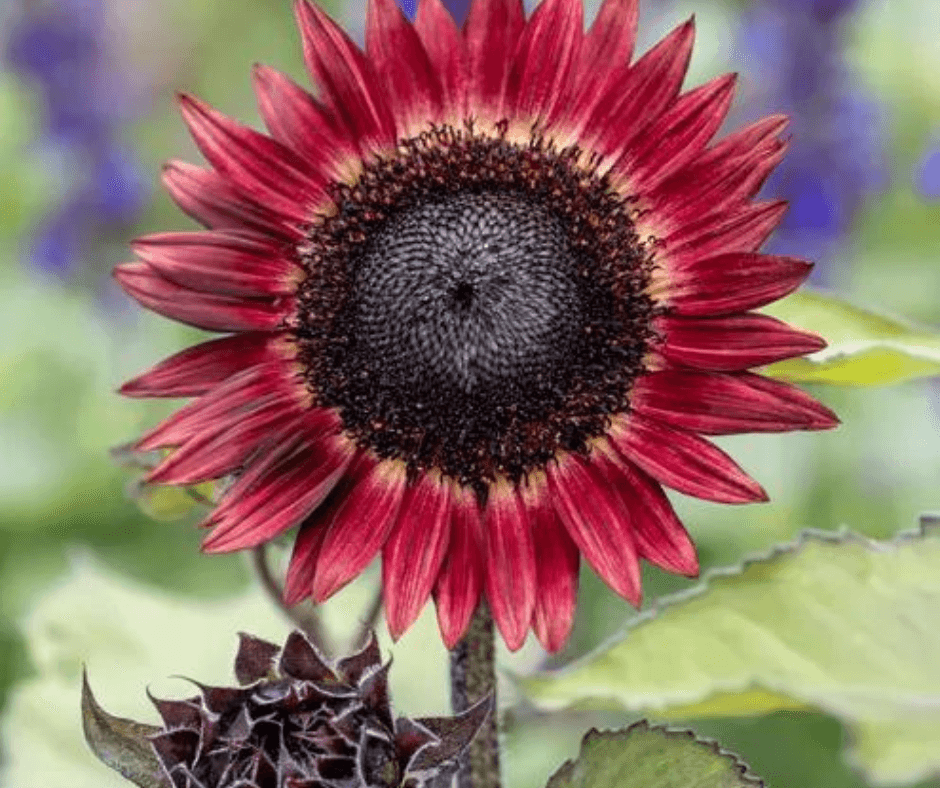
I adore sunflowers (Helianthus annuus), and several new varieties are available. Johnny’s Selected Seeds offers the 6-7′ foot tall ‘Desert Sun’ a luminous bloomer with 5-7” dark red, gold-edged flowers. The pollenless blooms don’t shed when cut and have long, strong stems. Not to be outdone, Burpee’s dwarf ‘Desire Red’ is a fully red, dark-centered sunflower, with plants reaching only 2-2.5 feet tall.
Sunflowers are a desirable choice for large flower borders, cutting gardens, and the margins of vegetable patches. They thrive in the full, hot sun, attract most pollinators (Article: Sunflowers for Bees), and are easy annuals to grow from seed. Blooming starts ~50-75 days after planting from seed, depending on the variety. After spring frosts, sow seeds outdoors in well-drained soil amended with Black Gold Garden Soil to a depth of 1-2″ or indoors on a sunny windowsill in pots of Black Gold Seedling Mix. Their blooms are long-lasting in a vase, and the seeds feed goldfinches, if you allow the heads to ripen in the warm summer sun.
All of these annuals need full sun and appreciate warm weather and average to fertile soil with good drainage. Amending the soil with Black Gold Garden Soil or Black Gold Garden Compost Blend will help facilitate deep root growth and vigor of most garden-grown annuals. Those planted in containers will thrive in bountiful pots filled with Black Gold All Purpose Planting Mix. Follow all planting and care instructions for the best results.
“I am starting a container garden for onions, potatoes, and carrots. I will be using the Black Gold potting mix plus fertilizer. Will I have to add any other product to the potting mix? Thank you.” Dennis of Thaxton, Virginia
Dear Dennis,
Potted vegetables grow best in large containers filled with excellent potting soil, like our Black Gold mixes, and quality fertilizer formulated for vegetables. Be sure that the containers drain well, and keep them evenly moist. Full sun exposure is a requirement. This is about all that you need. Thin your carrot as they grow, and space your onions and potatoes well. I also recommend that you read these articles about growing edibles in containers. We have many, many more on the site.
Happy gardening,
Jessie

Cannas are summer-garden workhorses. They grow lushly in the hottest months, only requiring regular water, partial sun, and maybe a hit of slow-release fertilizer at the beginning of the season. Their leaves are bold and lovely, their tropical flowers come in lots of warm pretty colors, and hummingbirds are prized pollinators. The plants also spread and are easily divided and shared. My garden will never be without one.

Cannas (Canna hybrids, Zones 8-11) are subtropical to tropical and American. There are 12-21 accepted species, depending on who you reference. These are found in Mexico, Central America, the Caribbean, and tropical South America. The common garden type is Canna × generalis, a hybrid of several species. They were cultivated by native Americans, presumably for both their attractive flowers and fleshy, edible roots. In the late 1900s, cannas were popularized in European and then North American gardens. Since this time, many attractive hybrids have been developed, with new varieties appearing now and then.
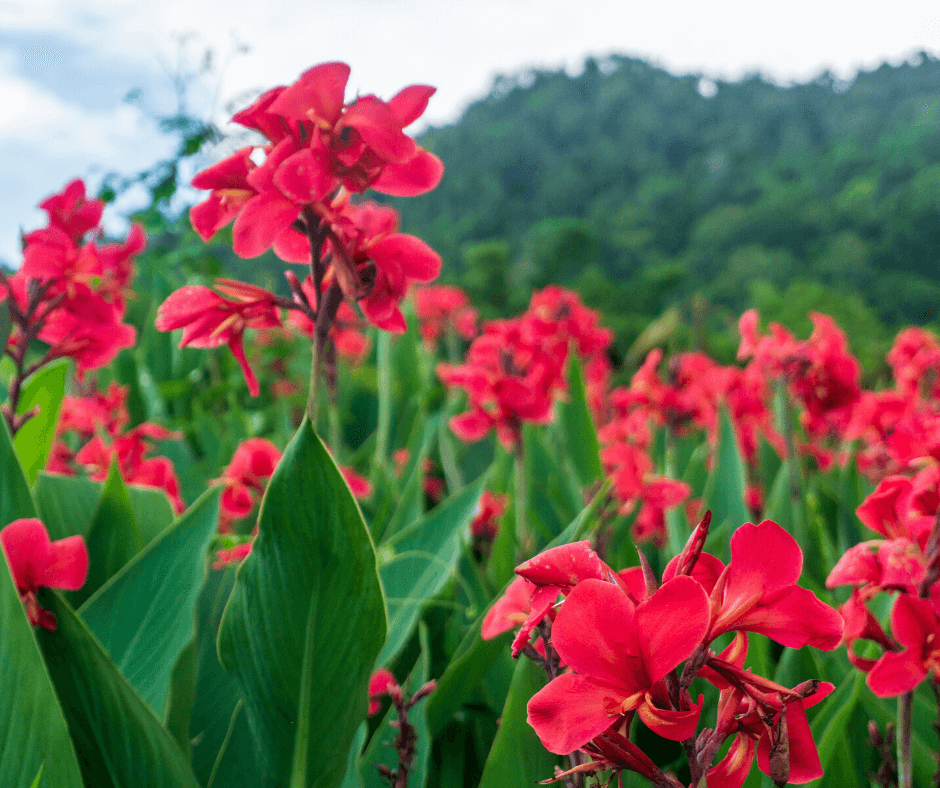
‘Alaska‘ (3-4 feet): Large cream-colored blooms are the great beauty of this compact canna, and its blue-green foliage is also respectably pretty. It gets all-around rave reviews.
‘Australia‘(4-5 feet): Large red flowers and big bronzy-purple leaves make this impressive canna a standout. If you are looking to fill a large space with lots of reliable color, this is your canna. It contrasts well with orange- and yellow-flowered plants.

‘Cleopatra‘ (4-5 feet): Expect explosive fireworks of color with ‘Cleopatra’. Its impressive green leaves have irregular blocks of dark purple. These are in stark contrast to its flowers, which are half red and half yellow with red spots. Expect it to receive many compliments.
‘Kreta‘ (3-4 feet): Here is a great canna for nonstop flowers. Its numerous red blooms are prolific and attract lots of hummingbirds and rise above large green leaves.
‘Musifolia‘ (6-8 feet): This old canna variety is grown for its tall stature and impressive large leaves with hints of red and purple. In the height of summer, it will also offer spikes of small red flowers.
‘Phasion‘ (syn. ‘Durban’ and ‘Tropicanna’, 3-4 feet): Most regard this as the most electrifying of all cannas. Few garden plants can challenge its impressive tropical palette of colors. Its striped leaves alone are a masterpiece, and its brilliant tangerine-orange flowers add the winning touch.
‘Striata‘ (syn. ‘Praetoria’, ‘Bengal Tiger’, and ‘Aureostriata’, 5-6 feet): My garden is never without a ‘Striata’ for summer color. Its pale-yellow striped leaves provide a more neutral backdrop for the light orange flowers it produces from midsummer to frost in my area.
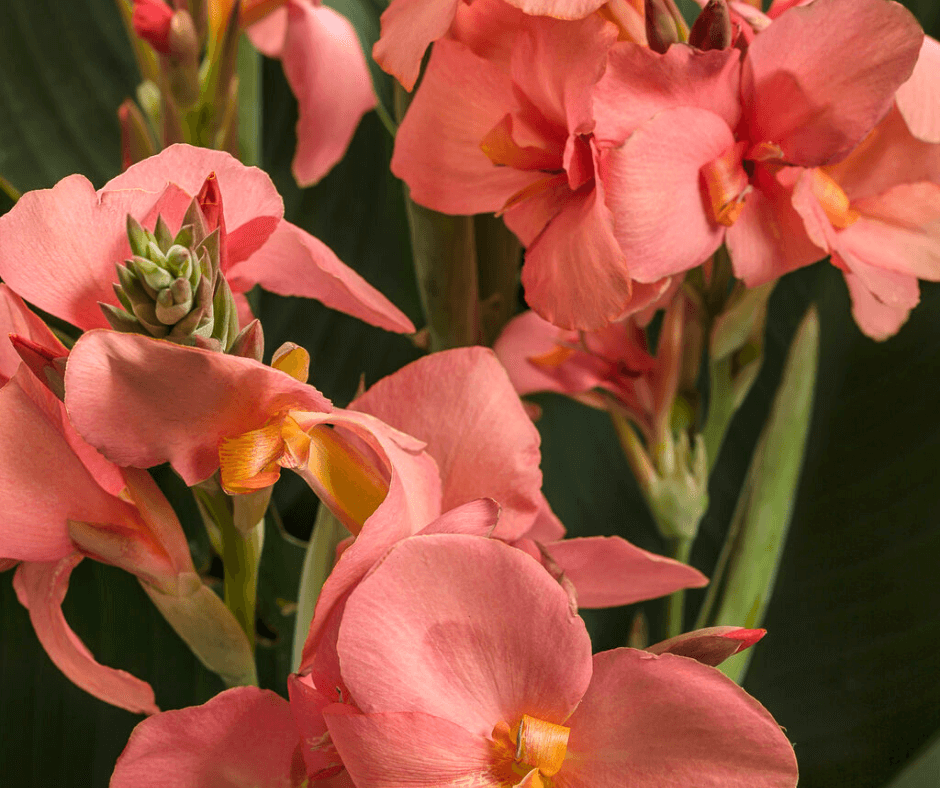
‘Tenerife‘ (3-4 feet ): Big golden flowers speckled with deep orange-red make this an extra lovely compact canna. Its leaves are medium green.
‘Wyoming‘ (3-4 feet): I always confuse ‘Wyoming’ and ‘Australia’ because they are comparable in every way except flower color. This one has beautiful orange flowers to offset its purplish-bronze foliage.
Toucan® Series (Scarlet, Yellow, Dark Orange, Coral, 2.5-4 feet): Toucan cannas are big bloomers on short-statured plants. They come highly recommended for containers. Expect them to perform beautifully all summer long.
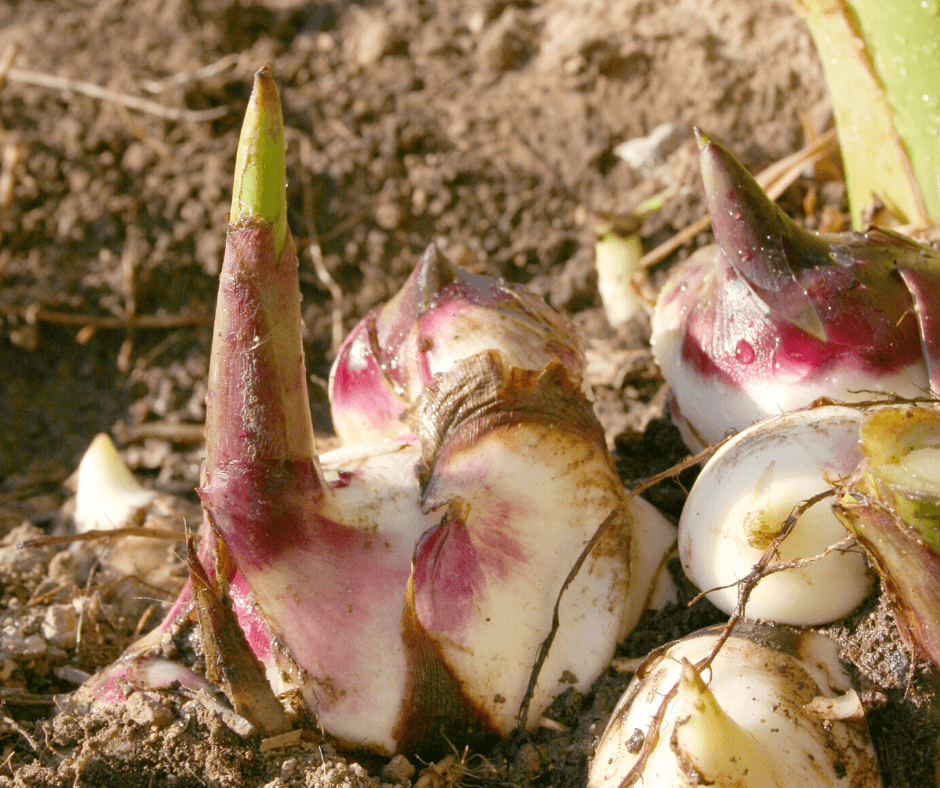
Cannas are lush, tropical to subtropical perennials that grow best in the full to partial sun. They thrive in rich moist to average soils–the addition of organic matter at planting time is recommended. Black Gold Garden Soil is a great choice. Provide a boost of continuous-release fertilizer formulated to encourage good growth and flowering. They originate in warm, humid, rainy areas and appreciate regular water. Many even grow well along pond margins or boggy spots. When conditions are warm, they will flower. If they are not hardy where you live, dig their dense, fleshy rhizomes in the fall and store them in a cool, dark place through winter. Plant them again outdoors when the soil has warmed and frosts are gone.
Several viral diseases will put a damper on canna growth and flowering. The two most common are the canna yellow streak virus (CaYSV) and the canna yellow mottle virus (CaYMV). Infected plants show abnormal leaves with browning or yellowing streaks or mottled patterns. If your canna leaves exhibit these, dig and dispose of them immediately. When replacing them, buy only certified virus-free stock (specialty growers are usually the most reliable source). Be sure not to reuse the potting soil, if your diseased plants were in containers.